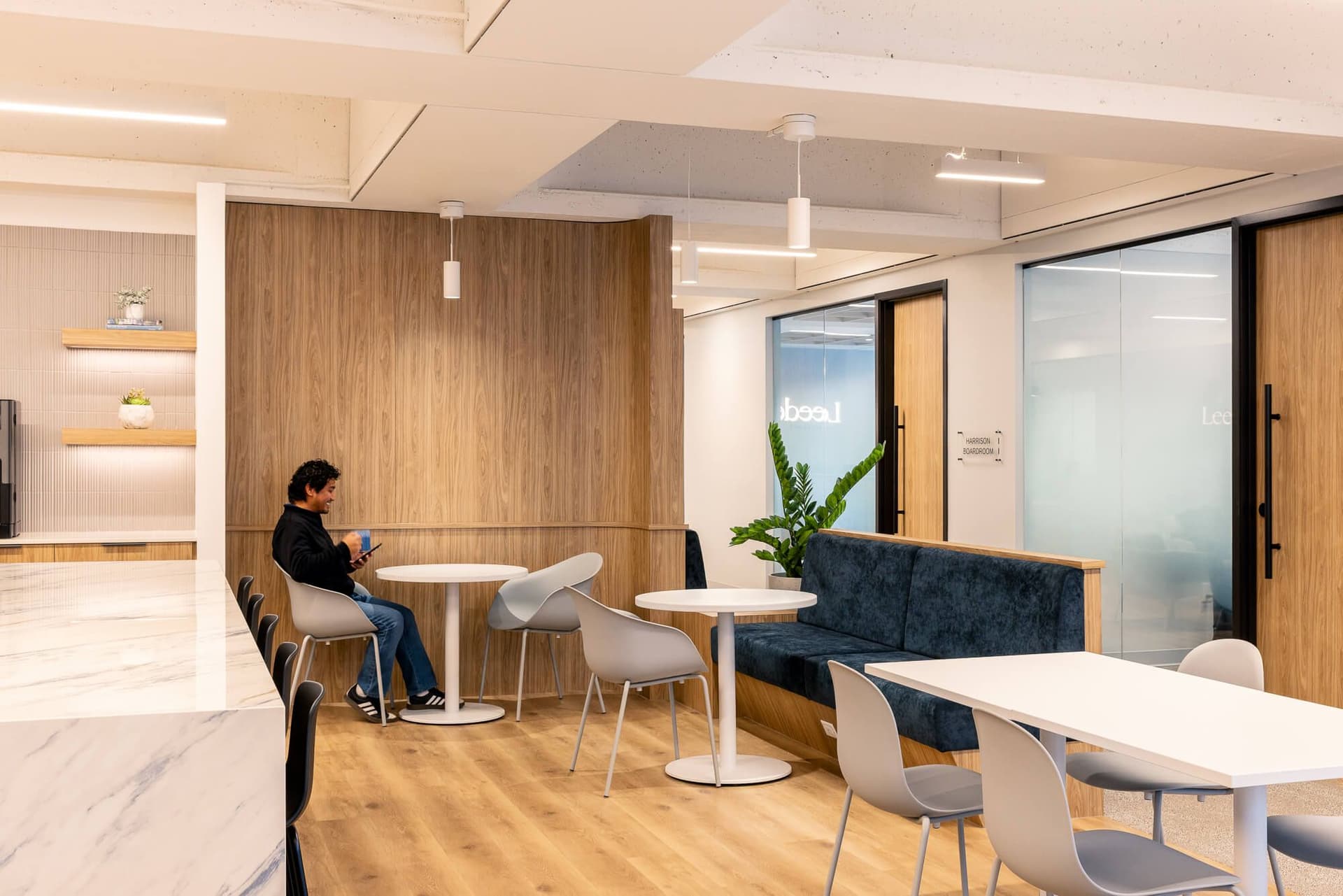Return to Work: How to Attract Staff Back to the Office
Are you looking for ways to encourage staff to come back to work in 2022? Click here for fail-safe tips to ensure a successful return to work
In June of 2021, 5 million Canadians reported working from home due to the pandemic deterring their daily work life. But, as an employer, you might wonder, as things return to the new sense of “normal,” when can employees be expected to return to work? How can companies attract staff back to the offer?
This can be a tricky subject. But we’ve created a guide detailing everything you need to know about flexible work arrangements and building a solid return-to-work policy. Buckle up because as your employees return to work, they’ll look to you to lead and redefine what it means to work in the office. Continue reading to learn Aura’s top tips for returning staff to the office.
Rethink your office environment.
Examine your office before asking your staff to return. Is it an environment that your employees will want to return to? Are you enhancing the work experience or merely requiring a return to work to fill seats?
Taking time to analyze the current workplace can allow companies to rethink the office environment and take action. The following are some measures that businesses may make to attract employees back to the office:
- Create new leisure areas or collaborative workspaces
- Implement changes that focus on health and wellness. Add biophilia, improve air quality, integrate glass walls to enhance natural lighting, or incorporate a wellness/meditation room.
- Improve workstation ergonomics by adding sit-stand desks, comfortable seating, and eye-level monitors.
- Invest in a redesign or new office layout.
- Relocate the office and create a new workplace that is expressly meant to be a destination for employees to return to.
Make the return to work transition slowly.
It can be a bit of a shock if you require that everyone return to work immediately. Many people have adjusted to the way things have been going as far as creating an office space within their homes where they can get their job done. Employees need time to acclimate themselves to returning to work and the changes you will make to the workspace to make returning to work possible.
Did your organization bring in new employees who have never been inside the office? If so, instead of throwing them into a new environment, you should take the same steps you would take for any other employee.
Bring them into the office and have them participate in an onboarding session. During this session, you can provide them with all the information they need to be successful and show them around the office space detailing the safety changes that have been made.
This shows you’re on board with supporting employees in any way possible.
Flexible work arrangements
As more individuals return to work, flexible work arrangements have risen to the top of the priority list. Employees are no longer asking for flexibility; it is now a requirement.
Companies must shift their perspective on work and take initiatives to enable flexible work options for employees. Adopting a hybrid work model, providing employees greater flexibility in how and when they work, or establishing a minimum number of days in the office can make employees more tolerant of returning to the office. There is no universal solution to employees’ reluctance to return to the workplace. Every organization is unique, so leaders and decision-makers must engage in conversations with employees to figure out how to enhance the workplace to entice people back to the office. Listen to employees and take their opinions and considerations into account. Before making changes or mandates, consider how they will affect employees and ensure that staff feel respected and safe.
Promote employee engagement
As employees continue to work from home, some negative aspects of remote work have come to light. Isolation, inability to maintain a work-life balance, and low company culture are all side effects of working remotely for too long. To overcome these challenges, companies must focus on unifying employees and fostering a strong company culture. When employees feel connected to each other and the company, they are more likely to want to return to the office.
This can be done in a variety of ways, including:
- Hosting work coffee happy hour
- Celebrating employee milestones and birthdays
- Offering different training programs that allow them to interact with other employees
- Scheduling team-building activities
- Encourage cross-departmental engagement through
These initiatives will help employees feel refreshed and energized to help them get back into the routine of doing things in the office again.
How to Get Employees to Return to Work?
Making the return to work is tricky, but it can be solved. There are several ways that companies can ease the transition and encourage staff to work on-office.
But first, we recommend you take the time to rethink the design of your office. Aura can help you do that with a consultation. Don’t forget to check out our portfolio because our work speaks for itself.


